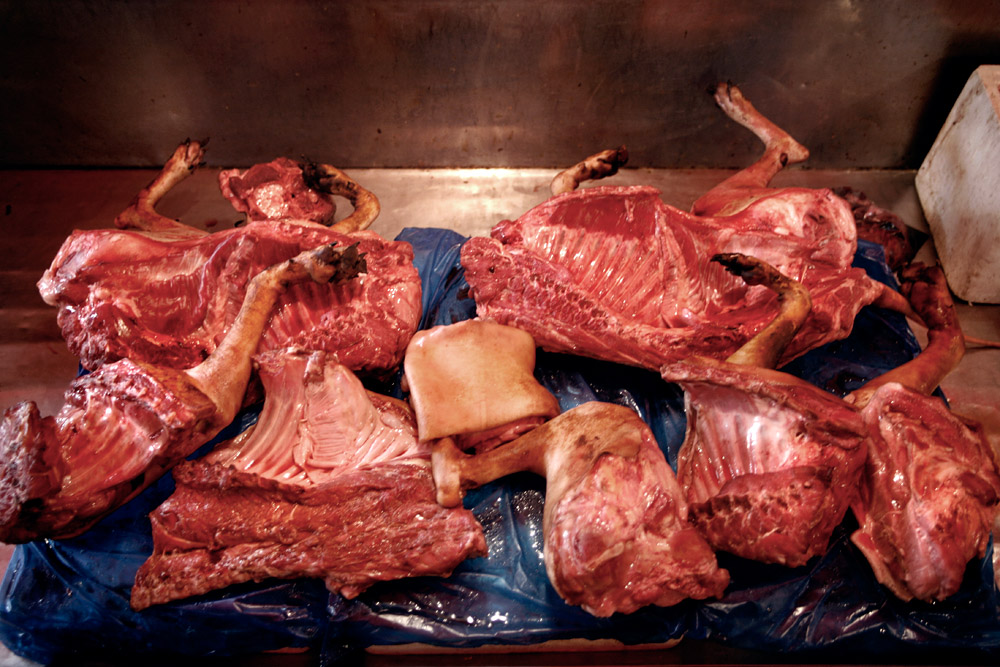Like many others in Cambodia, Chom Mong was desperate to make money in order to support this family. In 2015, Chom Mong, 38, a former chef, and his wife opened a dog meat restaurant near Phnom Penh’s airport.
He was catering to the many Cambodian customers who wanted to eat dog meat on that stretch of the street. Chom Mong and his wife Syna said they sold dog meat, but felt it was wrong.
They decided to switch over from selling dog meat to opening up a vegan restaurant, Sabay Vegilicious, in Phnom Penh, Cambodia.
In Buddhism, Cambodia’s state religion, dog is considered one of 10 forbidden meats, with bad luck said to fall on those who consume it.
“Selling dog meat didn’t seem normal, but it was an easy way to earn money,” Chom Mong says.
In March, with help from Marc Ching, of the Animal Hope and Wellness Foundation, and Cambodian-based animal rights advocate Dr Lucy Haurisa, Chom Mong and his wife, Syna, 35, took a drastic decision.
They closed their dog meat restaurant on the outskirts of the city and opened Sabay Vegilicious, a vegan restaurant, in a prime central spot – which was a financially risky move.
“It was a big leap,” says Chom Mong, who says dishes made with dog meat can fetch much higher prices than those that use other meats, such as chicken or pork – and vegan dishes. “But I feel much happier in my mind and want to show others what is possible,” he says.
The dog meat trade is well documented in countries such as China (where 20 per cent of people eat dog, according to the World Dog Alliance), South Korea (where 60 per cent of the population regularly eat the animal, it says), and Vietnam (where dog is consumed by 80 per cent of people, the alliance says). But relatively little research has been carried out in Cambodia, where dog and cat meat is openly consumed.
Katherine Polak, Four Paws International’s Southeast Asia head of stray animal care, estimates that up to one million dogs are slaughtered every year in the kingdom.
“A unique feature of Cambodia is that many believe the dog meat trade doesn’t exist there. The housing of dogs for slaughter is more discreet than in other countries, such as Indonesia, where dogs are displayed in cages openly at markets,” she says.
At dusk, a street next to the Olympic Stadium in Phnom Penh flickers to life as street restaurants open their shutters. Signs in Khmer reading “Delicious dog meat” hang outside, and barbecue grills full of dog parts are fired up. A dog’s head often hangs outside such restaurants. It’s a sight that is common across the country, from rural provinces to the tourist hub of Siem Reap.
Tina Sen, 32, hails from Koh Kong province in southwest Cambodia. He moved to the capital four years ago to work in construction and says he often gathers with friends at weekends for an evening of eating dog and swigging beer or rice wine.
“We like to eat dog,” he says, adding that his preference is to eat it curried or barbecued. “Sometimes we eat cat too, but we prefer the dog meat. It is tastier and better for you.”
Like many Cambodians, Tina Sen believes eating dog brings a swathe of health benefits, from boosting virility to keeping the body warm during Cambodia’s “cold season” of December and January – especially if the dog is black.
Lee Fox-Smith, who has been documenting Cambodia’s dog meat industry and is preparing to write a book on his findings, says it is also common for poverty-stricken families to trade their dog for household items.
“People sell their dogs for pots and pans because they are poor,” Fox-Smith says.
h/t: SCMP




